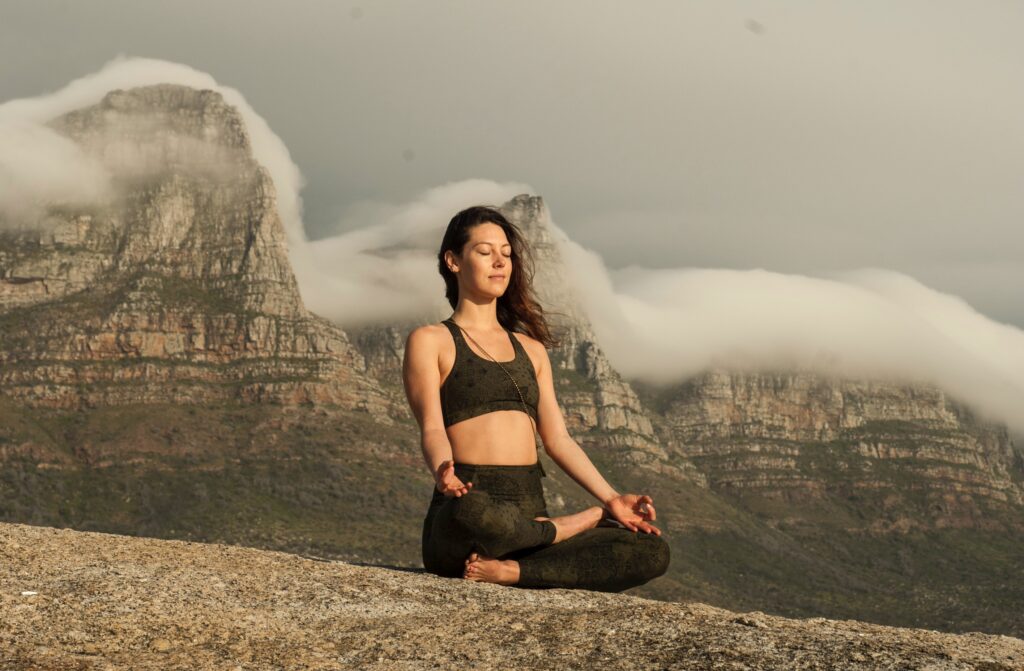Unwind Your Mind: Meditation Techniques for Stress Relief

Introduction
Stress is an inevitable part of life, but when left unmanaged, it can take a toll on our mental, emotional, and physical well-being. One of the most effective ways to counter stress is through meditation. In this article, we will explore various meditation techniques to help you find relief from stress and maintain a sense of balance and peace in your life.
Benefits of Meditation for Stress Relief
Meditation offers numerous benefits for stress relief, including:
- Reducing cortisol levels
- Lowering blood pressure
- Improving sleep quality
- Enhancing focus and concentration
- Boosting mood and emotional well-being
By incorporating meditation into your daily routine, you can create a powerful tool for managing stress and maintaining overall health.
Preparing for Meditation
Before you begin your meditation practice, consider the following tips to ensure a comfortable and effective session:
Choosing a Quiet Space
Find a quiet and comfortable space where you can sit or lie down without distractions. This could be a dedicated meditation room, a corner of your bedroom, or even a peaceful spot in your garden.
Wearing Comfortable Clothing
Wear loose, comfortable clothing that allows you to breathe and move freely. Remove any tight or restrictive garments, such as belts or shoes, to ensure optimal relaxation.
Setting a Timer
Using a timer can help you stay focused during your meditation session without worrying about the time. Set your timer for your desired session length, typically between 10 and 30 minutes, and allow yourself to become fully immersed in the practice.
11 Meditations and How to Practice
1. Breath Awareness Meditation
Breath awareness meditation is a fundamental mindfulness practice that cultivates focus and relaxation by bringing attention to the natural rhythm of the breath. It serves as a foundational technique for many other meditation practices. To practice breath awareness meditation:
- Find a quiet, comfortable space where you won’t be disturbed.
- Sit in a comfortable position, either on a chair with your feet flat on the ground or on a cushion on the floor with your legs crossed. Keep your back straight and your hands resting on your thighs or knees.
- Close your eyes and take a few deep breaths, focusing on the sensation of the breath entering and leaving your body through your nose or mouth.
- Gradually allow your breath to return to its natural rhythm, without trying to control or alter it in any way.
- Bring your attention to the sensation of the breath as it moves in and out of your body. You may choose to focus on the feeling of the air passing through your nostrils, the rise and fall of your chest, or the gentle movement of your abdomen.
- As thoughts, emotions, or distractions arise, gently acknowledge them without judgment, and then return your focus to your breath.
- Continue this process of observing your breath, maintaining a sense of non-judgmental awareness and presence in the present moment.
- Practice breath awareness meditation for 10 to 20 minutes daily, or as a foundation for other meditation techniques.
2. Progressive Muscle Relaxation
Progressive muscle relaxation involves systematically tensing and relaxing different muscle groups to release tension and promote relaxation. To practice progressive muscle relaxation:
- Find a quiet, comfortable space where you won’t be disturbed.
- Sit or lie down in a comfortable position, with your eyes closed.
- Take a few deep breaths, focusing on the sensation of the breath entering and leaving your body.
- Starting with your feet, tense the muscles as tightly as you can for 5 to 10 seconds, then release the tension and feel the relaxation.
- Gradually move up through the body, tensing and relaxing each muscle group in turn, including the legs, abdomen, back, arms, hands, shoulders, neck, and face.
- Once you have completed the full body scan, take a few moments to enjoy the deep relaxation and sense of calm that has been cultivated.
- Practice daily or whenever you feel the need for physical and mental relaxation.
3. Body Scan Meditation
Body scan meditation involves focusing on different parts of the body to cultivate awareness and relaxation. To practice body scan meditation:
- Find a quiet, comfortable space where you won’t be disturbed.
- Sit or lie down in a comfortable position, with your eyes closed.
- Take a few deep breaths, focusing on the sensation of the breath entering and leaving your body.
- Starting with your feet, bring your awareness to each part of the body in turn, moving up through the legs, abdomen, back, arms, hands, shoulders, neck, and face.
- As you focus on each body part, notice any sensations, such as tension, warmth, or tingling, without judgment or trying to change them.
- Gradually move your awareness through the entire body, cultivating a sense of deep relaxation and presence.
- Practice for 10 to 20 minutes daily, or whenever you feel the need for mental and physical relaxation.
4. Loving-Kindness Meditation
Loving-kindness meditation, also known as Metta meditation, involves cultivating compassion and love for oneself and others. To practice loving-kindness meditation:
- Find a quiet, comfortable space where you won’t be disturbed.
- Sit in a comfortable position, either on a chair or a cushion on the floor, with your back straight and hands resting on your thighs or knees.
- Close your eyes and take a few deep breaths, focusing on the sensation of the breath entering and leaving your body.
- Begin by silently repeating phrases such as “May I be happy, may I be healthy, may I be safe, may I be at ease” for yourself.
- Gradually extend the loving-kindness to others, including loved ones, acquaintances, and even those you may have difficulties with, by repeating the phrases for each person or group.
- Practice for 10 to 20 minutes daily, or whenever you feel the need for emotional healing and connection.
5. Guided Imagery Meditation
Guided imagery meditation involves using mental images to evoke relaxation and calm. To practice guided imagery meditation:
- Find a quiet, comfortable space where you won’t be disturbed.
- Sit or lie down in a comfortable position, with your eyes closed.
- Take a few deep breaths, focusing on the sensation of the breath entering and leaving your body.
- Begin to visualize a peaceful scene, such as a serene beach or a lush forest. Use all your senses to make the imagery as vivid as possible.
- Allow yourself to become fully immersed in the experience, letting any tension or stress dissolve as you connect with the tranquillity of the scene.
- Practice for 10 to 20 minutes daily, or whenever you feel the need for relaxation and stress relief.
6. Yoga Nidra
Yoga Nidra, also known as yogic sleep, is a guided relaxation technique that combines elements of body scan meditation, breath awareness, and visualization. To practice Yoga Nidra, it is recommended to use a guided recording or attend a class led by a qualified instructor. During a Yoga Nidra session:
- Find a quiet, comfortable space where you won’t be disturbed.
- Lie down on your back, with your arms and legs slightly apart and palms facing up.
- Close your eyes and follow the guidance provided in the recording or by the instructor, which may include breath awareness, body scan meditation, and visualization exercises.
- Allow yourself to enter a state of deep relaxation and stillness, while remaining aware and present.
- Practice regularly for optimal stress relief and relaxation benefits.
7. Mindfulness Meditation
Mindfulness meditation is the practice of focusing on the present moment with non-judgmental awareness. To practice mindfulness meditation:
- Find a quiet, comfortable space where you won’t be disturbed.
- Sit in a comfortable position, either on a chair or a cushion on the floor, with your back straight and hands resting on your thighs or knees.
- Close your eyes and take a few deep breaths, focusing on the sensation of the breath entering and leaving your nostrils.
- Gradually shift your attention to your breath, noticing the rising and falling of your abdomen or chest with each inhalation and exhalation.
- When your mind wanders, gently bring it back to the breath without judgment.
- Practice for 10 to 20 minutes daily, gradually increasing the duration if desired.
8. Transcendental Meditation
Transcendental Meditation (TM) is a technique that involves the use of a personal mantra to achieve a state of deep relaxation and inner peace. To learn TM, it is recommended to attend a course with a certified TM teacher, as the specific method and mantra are taught individually. Once you’ve learned the technique:
- Find a quiet, comfortable space where you won’t be disturbed.
- Sit in a comfortable position, either on a chair or a cushion on the floor, with your back straight and hands resting on your thighs or knees.
- Close your eyes and silently repeat your personal mantra, allowing your mind to settle into a deep state of relaxation and inner peace.
- Practice for 15 to 20 minutes twice daily, ideally in the morning and evening.
9. Zen Meditation (Zazen)
Zen meditation, or Zazen, is a form of seated meditation practiced in Zen Buddhism that focuses on posture, breath, and mindfulness. To practice Zen meditation:
- Find a quiet, comfortable space where you won’t be disturbed.
- Sit on a cushion or folded blanket, with your legs crossed in a comfortable position, such as half-lotus or full-lotus.
- Keep your back straight, with your hands resting on your lap, palms facing upwards and the tips of your thumbs lightly touching.
- Tilt your head slightly forward, with your gaze lowered and unfocused or your eyes closed.
- Bring your attention to your breath, focusing on the natural rhythm of your inhalations and exhalations, without trying to control or change it.
- When your mind wanders, gently return your focus to your breath, maintaining a non-judgmental awareness of the present moment.
- Practice for 10 to 30 minutes daily, or as part of a regular Zen meditation practice.
10. Walking Meditation
Walking meditation is a form of mindfulness practice that involves bringing awareness to the sensations and movements of the body while walking. To practice walking meditation:
- Find a quiet, flat area where you can walk without distractions, such as a park or a dedicated meditation path.
- Stand with your feet hip-width apart and your arms relaxed by your sides.
- Take a few deep breaths, focusing on the sensation of the breath entering and leaving your body.
- Begin to walk slowly and deliberately, paying close attention to the sensations in your feet, legs, and the rest of your body as you move.
- As you walk, maintain an awareness of your breath and the surrounding environment, while letting go of any thoughts or distractions that may arise.
- Practice for 10 to 20 minutes daily or as a complement to your seated meditation practice.
11. Chakra Meditation
Chakra meditation is a technique that focuses on the seven energy centres, or chakras, within the body, aiming to balance and harmonize their energy. To practice chakra meditation:
- Find a quiet, comfortable space where you won’t be disturbed.
- Sit in a comfortable position, either on a chair or a cushion on the floor, with your back straight and hands resting on your thighs or knees.
- Close your eyes and take a few deep breaths, focusing on the sensation of the breath entering and leaving your body.
- Begin to visualize each chakra, starting with the root chakra at the base of the spine, moving up through the sacral, solar plexus, heart, throat, third eye, and crown chakras.
- As you focus on each chakra, imagine its associated colour and energy expanding and glowing, while silently repeating any affirmations or mantras associated with that chakra.
- Continue this process for each chakra until you have visualized and balanced all seven energy centres.
- Practice for 10 to 20 minutes daily, or whenever you feel the need for energetic balance and harmony.
Creating a Meditation Routine
Establishing a consistent meditation routine can help to maximize the stress-relieving benefits of your practice. Consider setting aside a specific time each day for meditation, whether it’s first thing in the morning or before bed, and commit to practising for a set duration, such as 10, 20, or 30 minutes.
Supplements for Stress Relief
In addition to meditation, certain supplements may help to support stress relief. Here is a more detailed explanation of each supplement mentioned:
Magnesium
Magnesium is an essential mineral that plays a critical role in over 300 enzymatic reactions in the body, including those related to nerve function, muscle contraction, and energy production. Magnesium has been found to regulate the stress response by supporting the function of the hypothalamic-pituitary-adrenal (HPA) axis, which is responsible for controlling our reaction to stress. Supplementing with magnesium can help to promote relaxation, reduce anxiety, and improve sleep quality.
L-theanine
L-theanine is an amino acid found naturally in green tea and certain types of mushrooms. It has been shown to increase the production of alpha brain waves, which are associated with a state of relaxed alertness. Studies have found that L-theanine can help to reduce stress and anxiety by increasing the levels of GABA, a neurotransmitter that promotes relaxation, and by reducing the activity of excitatory brain chemicals. L-theanine is available in supplement form, often combined with other stress-relieving ingredients.
Ashwagandha
Ashwagandha, also known as Withania somnifera or Indian ginseng, is an adaptogenic herb that has been used in Ayurvedic medicine for centuries to support overall well-being. Adaptogens are substances that help the body adapt to stress and maintain balance. Research has shown that ashwagandha can help to reduce stress and anxiety by balancing cortisol levels, the primary stress hormone, and by modulating the activity of the HPA axis. Ashwagandha is available in various forms, including capsules, powders, and extracts.
B vitamins
B vitamins are a group of eight essential nutrients that play a crucial role in maintaining good health and well-being. They are involved in a wide range of processes, including energy production, neurotransmitter synthesis, and the regulation of stress hormones. Some of the key B vitamins for stress relief include:
- Vitamin B1 (thiamine): Supports energy production and nervous system function.
- Vitamin B3 (niacin): Helps to produce neurotransmitters, such as serotonin, which can improve mood and reduce stress.
- Vitamin B5 (pantothenic acid): Plays a crucial role in the production of stress hormones and supports adrenal gland function.
- Vitamin B6 (pyridoxine): Involved in the synthesis of neurotransmitters, such as serotonin and GABA, which can help to regulate mood and reduce anxiety.
- Vitamin B9 (folic acid): Supports the production of neurotransmitters and has been linked to improved mood and stress resilience.
- Vitamin B12 (cobalamin): Essential for healthy nerve function and the production of neurotransmitters, such as serotonin and dopamine.
Supplementing with a B-complex vitamin can help to support stress management and overall well-being.
Remember to consult with a healthcare professional before adding any supplements to your routine, especially if you are pregnant, nursing, or taking medications.
Conclusion
In conclusion, meditation offers a powerful and effective way to alleviate stress and promote overall well-being. By exploring and incorporating various meditation techniques such as mindfulness, loving-kindness, body scan, progressive muscle relaxation, guided imagery, Zen, walking, chakra, and breath awareness meditation into your daily routine, you can create a personalised practice that suits your individual needs and preferences. Remember to be patient and consistent in your practice, as the benefits of meditation often accumulate over time. By dedicating yourself to cultivating inner peace and relaxation, you’ll discover the profound impact meditation can have on your stress levels and overall quality of life.



